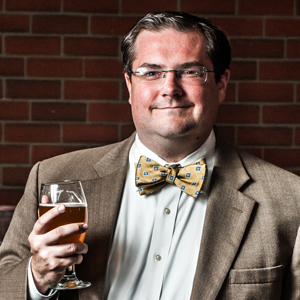Last month, I took my first trip to Nebraska and visited breweries and bars, and met with local folks who are intensely proud of their heritage and the future of their beer culture.
I spent a few days and nights at the Nebraska Brewing Co., where founders Kim and Paul Kavulak proudly showed off their brewpub and full-production brewery. There, I was introduced to their pale ale, a mild beer that embraces earthy hops along with caramel and bready biscuit malts. At the brewery a 16-ounce serving in a glass goblet cost $5.50.
On my way out of town, I made one last stop at a bar inside the Omaha airport. There, a serving of the same beer, less than 16-ounces, cost me $9.32. It came in a plastic cup. For comparison, Bud Light was $7.40. I reluctantly paid the high price but it got me thinking.
How much should we pay for a beer? How much are you willing to spend? It’s a complicated answer because each person values the liquid at a different level. I enjoy the Nebraska Brewing Co. beer and get comfort out of knowing that my money is going toward the business and employees. When I was at the pub, the beer price was listed on the menu. I knew what I was about to pull from my wallet while the beer was on the way. Not so much at the airport. I felt duped when the server told me, but mostly because I didn’t ask. I should know better.
In this issue Brian Yaeger takes a look at brewery bottle clubs. These membership-only entities ask patrons to fork over cash in advance of special releases. The promise is that the member will get access to exclusive beers. While obviously designed to taste great, these beers come with a high price tag and mainly offer bragging rights. The breweries that offer a special club usually have a solid reputation, so the beers they release have an expectation of exceptional quality, and members don’t mind shelling out cash for a special surprise.
For the rest of us, however, it’s not unreasonable to want to know what we’re paying for when we order. If the beer is worth the price in our head and it matches the board, that’s fine. When there is no price (or serving size), that’s when the real problem arises.
Years ago I was turned on to the Honest Pint Project. The goal was to call out places that served beer in cheater pints—glasses that look like the standard 16-ounce pint glass, but actually have a thicker bottom and fall into the 13- to 14-ounce range. Bars that use these glasses often charge the customer as if it was a full pint. The project has falled by the wayside, but I think the time is right for a revival. I can’t speak to what a proper serving of beer costs. So much depends on the liquid itself and where you purchase it. However, I’d like to see more places—airports especially—list how much beer you’re getting and how much it will cost you.
I’ve now resolved to ask the price of a beer in advance and its serving size if it’s not listed on a menu. It’s then on me to see if said beer is worth the price, or if it’s time to drink something else, or simply move on to another establishment.
This column appears in the May 2015 issue of All About Beer Magazine. Click here to subscribe.
John Holl
John is the editor of All About Beer Magazine and the author of three books, including The American Craft Beer Cookbook. Find him on Twitter @John_Holl.


Until recent years th UK required glassware to have a mark certifying the proper amount had been poured. The last thing I want is more regulation of the beer industry, ideally I’d like the 3-Tier System to be abolished. That said this could be a business opportunity. The breweries should be pushed to develope their own glassware that they’d then require retail outlets to use when serving their beer (I.e. Sam Adams). Smaller breweries who couldn’t afford that kind of expense could contract with a third party that offered a generic certified glass and when contracting the distribution and trail sale of their product they would require it be served in the third party certified glass. Problem solved.
My only comment is that a true pint is 20 fluid ounces, not any other measure. Get with the programme North America.